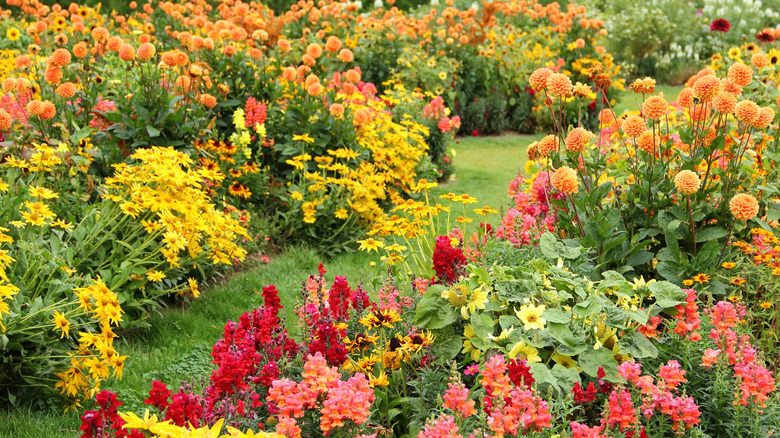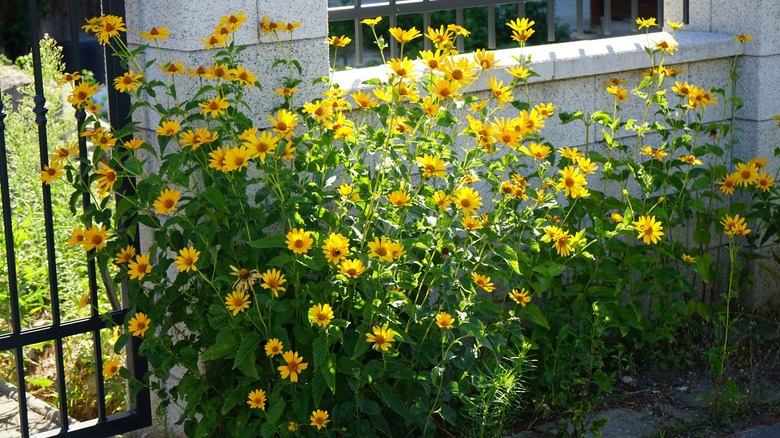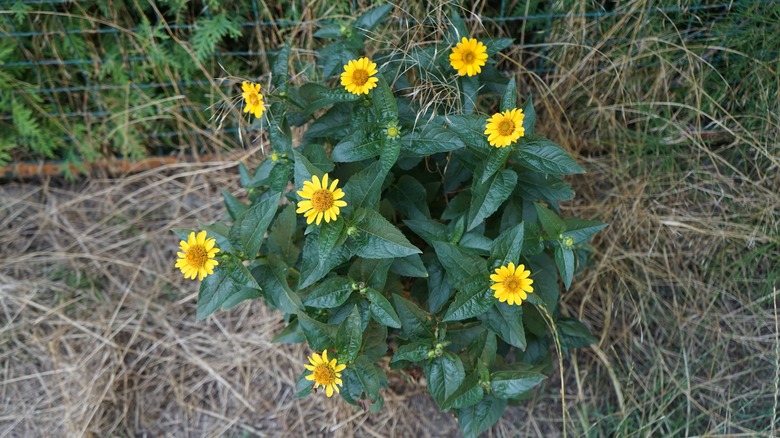Why This Perennial Sunflower Variety Can Be A Pest In The Garden
Sunflowers are gorgeous, but their annual growth habit means you must save and plant their seeds again each year – -unless you want to take the risk and leave them to self-seed. If you want perennial sunflowers that still attract pollinators in droves, you might consider turning to the false sunflower, Heliopsis helianthoides. Also known as the ox-eye sunflower, the plant in the aster family looks a lot like the beloved Helianthus annuus with its long-blooming, bright yellow flowers, but it can survive cold temperatures and come back year after year. Still, as good as this may sound, this hardy plant can sometimes become a pest and develop a weedy or even invasive growth habit. It will take up too much space and become tough to get rid of once it claims your garden as its home.
False sunflowers are native to North America and often found in open areas, like fields and prairies. They thrive in sunshine and moist soil, though they tolerate dry conditions and partial shade. This native plant isn't an invasive threat, like other species, but it can certainly threaten manicured landscapes as it chokes out other plants with its rapid growth. Keep an eye on this ox-eye, and only introduce it to your garden if you plan on keeping it in check.
Ox-eye sunflowers spread and grow quickly
Unlike annual sunflowers, false sunflowers grow rhizomes underground, allowing them to survive winter and live as perennials. Rhizomes function like bulbs and are the starting point for the next flush of growth. If rhizomes are left in the ground, you can expect the flowers to appear again next year–provided that the rhizome can withstand frigid winters in your climate. To remove false sunflowers from your garden, you have to ensure you get every last rhizome, or they'll keep returning.
False sunflowers grow in clumps and can spread up to 3 feet wide and up to 5 feet tall. They reach this size pretty quickly, allowing them to choke out neighboring plants, especially those that are shorter and smaller. False sunflowers tend to need some support as they grow taller or if they're grown in partial shade. If they need support and no stakes are available, they may rely on nearby plants, which will contribute to the problem of overcrowding. At the end of the season, they'll drop their seeds, allowing this plant to spread further out of control. Not only do you have to watch for rhizomes, but you also have to watch for seeds and seedlings.
False sunflowers aren't picky about growing conditions
This sunflower wannabe is resilient, making it a great choice for naturalized gardens with difficult growing conditions. The plant is happiest in full sunlight with moist soil, but it leaves a lot of room for forgiveness. It tolerates many adverse conditions, including drought, excessive heat, erosion, and poor-quality soil. Neglect isn't the worst thing for this plant, especially since it can self-seed in autumn, which is the best time of year to sow wildflower seeds. If the plant can survive with minimum care, you can expect its offspring to do the same.
Although it has the ability to handle less-than-ideal situations, that doesn't mean it will thrive everywhere. False sunflowers can survive with less sunlight and water, though their growth habit may become leggy, forcing the stems to flop over. Unfortunately, flopping over doesn't mean the plant will die off. It will stay in your garden until you remove it yourself, making it a bit of a pest to deal with.


